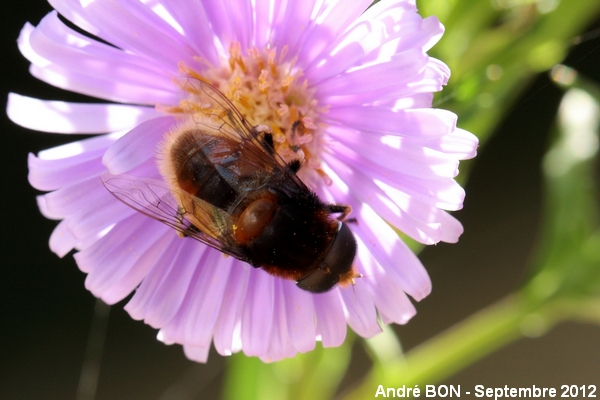
| Eristalis intricaria (Linnaeus, 1758) |

|
|
Scientific name: Eristalis intricaria (Linnaeus, 1758) Common name: French name: Eristale brouillée Order: Diptera Family: Syrphidae Wingspan : 11 to 15 mm. Biotope: Damp forests, marshes. Geographic area: Palaearctic region. Observation period : March to September. |
Eristalis intricaria is a rather large hoverfly resembling a Bumblebee. You can identify the hoverflies belonging to the eristalini tribe with the longitudinal veins of the wings. The two first veins join before the margin of the wing. The third one is strongly curved and draws a U-shape. Eristalis intricaria's eyes, touching on males and widely separated on females, are hairy. There is a tuft of russet hairs on the front of the head. The orange-yellow coloured arista is feathery. The thorax is black. The scutellum is yellow and hairy. The abdomen is covered by dense hairs which are generally a sandy russet colour on males and black (on tergite 2) and white (at the tip) on females. The tibias are white on the fore half and black on the hind half. Larvae called rat-tailed maggot grow in stagnant putrid water. Hoverflies of the Merodon genus and Volucella bombylans have completely black tibias. |
| [To know more about the Eristalis intricaria] [Top] |

|
The wings' veins indicate the eristalini tribe. You can see a small part of the white area on the fore half of the tibias. This confirms the Eristalis intricaria species. The eyes touching on the upper side and the general colour of the abdomen indicate one male. |